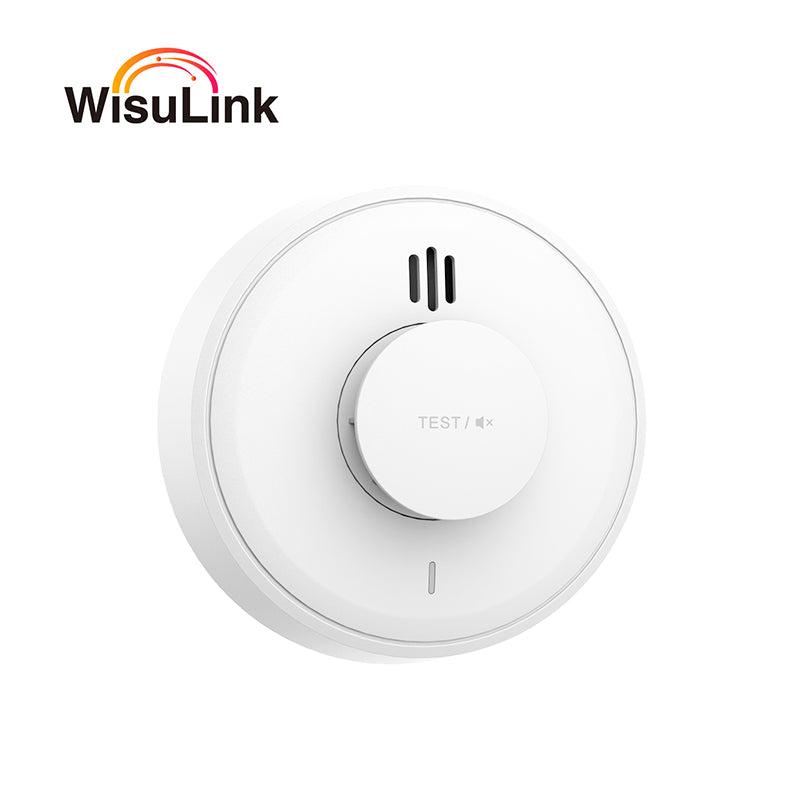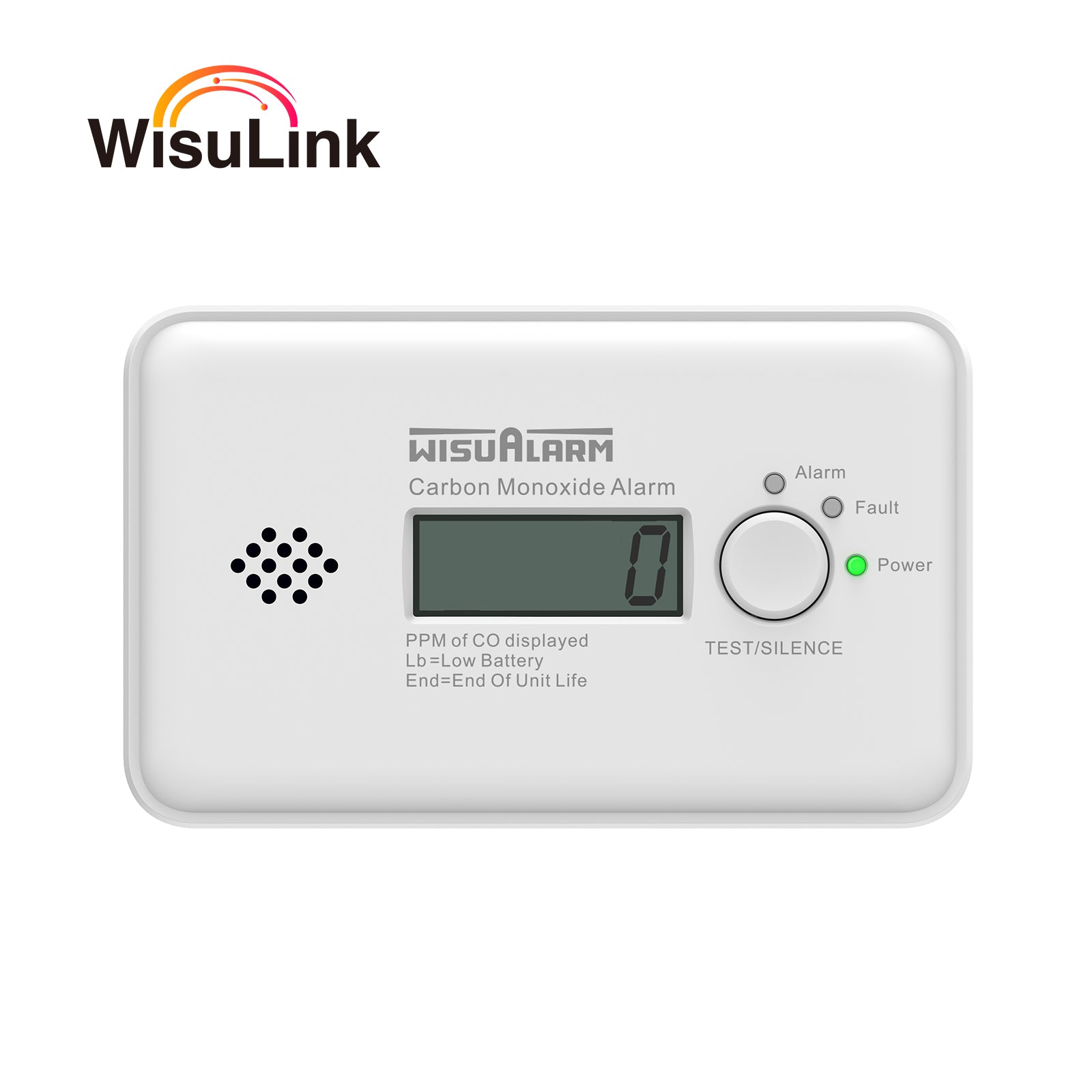If you’re a renter, live in a listed building, or simply hate the idea of drilling holes in your walls or ceiling, a stick-on smoke alarm is a game-changer. In the UK, fire safety regulations (outlined in the Regulatory Reform Order 2005) require every home to have at least one working smoke alarm on each floor – but traditional hard-wired or screw-mounted models can feel like a hassle. Stick-on options let you meet those rules and keep your space intact. Here’s how to choose, install, and get the most out of a stick-on smoke alarm – plus a standout option that adds even more flexibility.

Why Stick-On Smoke Alarms Work for UK Homes
UK homes often come with quirks that make stick-on alarms a smart pick:
- Renters’ peace of mind: Most tenancy agreements ban drilling without the landlord’s permission. A stick-on alarm avoids disputes and keeps your deposit safe.
- Older properties: Listed buildings or homes with delicate plasterwork can’t handle holes. Stick-on models protect historic features while keeping you safe.
- Flexibility for small spaces: Studios, flats, or attic conversions often lack room for bulky wiring. Battery-powered stick-on alarms fit seamlessly, no electrician needed.
- Compliance first: The best stick-on models still meet UK safety standards (look for the British Standard BS EN 14604 mark) – so you’re not trading convenience for protection.
What to Look for When Buying a Stick-On Smoke Alarm in the UK
Not all stick-on alarms are equal. Prioritise these features to stay safe and avoid frustration:
- Strong, heat-resistant adhesive: UK homes can get warm in summer (or drafty in winter) – the adhesive must hold firm in temperatures between 0°C and 40°C. Avoid cheap tapes that peel off after a few months.
- Battery life that lasts: Aim for alarms with at least 12 months of battery power (AA or AAA are easiest to replace). Some even have a 10-year sealed battery – perfect if you hate frequent checks.
- A loud, clear alarm: The alarm needs to hit at least 85 decibels (loud enough to wake you from a deep sleep). Look for models with a “hush” button too – handy for accidental triggers (like burnt toast!).
- Size and weight: Stick-on alarms should be lightweight (under 300g) so the adhesive can support them long-term. Bulky models with extra features (like carbon monoxide detectors) might need screws – check the specs first.
Step-by-Step: Installing a Stick-On Smoke Alarm Safely
Follow these UK-specific tips to get your alarm up and running – no tools required:
- Pick the right spot (follow UK fire rules):
- Put one alarm on every floor, including the ground floor and attic.
- In bedrooms: Install near the door (not above the bed, where it might be muted by pillows).
- In kitchens: Keep it at least 1.5 metres away from hobs or toasters to avoid false alarms.
- Avoid corners, windows, or areas with heavy steam (like near bathrooms) – these can interfere with sensors.
- Clean the surface thoroughly:
- Wipe the ceiling or wall with a dry cloth to remove dust, cobwebs, or grease (common in UK kitchens!). For stubborn grime, use a small amount of rubbing alcohol (let it dry fully first).
- Prep the adhesive:
- Peel off the protective film from the alarm’s adhesive pad. If the pad is separate, stick it to the back of the alarm first.

- Press and hold:
- Press the alarm firmly against the surface for 30 seconds. Some adhesives need 24 hours to set fully – check the instructions (this stops the alarm slipping later!).

- Test it straight away:
- Press the “test” button – you should hear a loud, steady beep. If not, check the battery (or contact the manufacturer if it’s faulty). Repeat the test every month (a good reminder: do it when you pay your rent!).
Wisualarm Smoke Alarm: The UK’s Favourite Stick-On Option (With a Twist)
If you want a stick-on alarm that’s flexible, reliable, and built for UK homes, the Wisualarm Smoke Alarm with magnetic patches is a top choice. Here’s why it stands out:
- Magnetic convenience, no permanent stick:
Instead of a one-time adhesive pad, Wisualarm includes strong magnetic patches. Stick the patch to your ceiling (following the same steps above), wait 24 hours for it to set, then magnetically attach the alarm. Need to replace the battery or move it to a new room? Just pull it off – no residue, no damage.
- UK safety approved:
It meets BS EN 14604 standards, has an 85dB alarm, and a 2-year battery life (AA batteries included – easy to buy from any UK supermarket).
- Perfect for renters and homeowners alike:
Landlords love it (no holes = no repair costs), and homeowners appreciate the flexibility – move it when you redecorate, or take it with you if you move.
- 5-year warranty (unheard of for stick-on alarms!):
Most stick-on alarms come with a 1-year warranty, but Wisualarm backs theirs for 5 years. That’s peace of mind knowing your alarm will work when you need it most.
Final Tip: Keep Your Stick-On Alarm Working Well
In the UK, smoke alarms save over 200 lives every year – but only if they’re maintained. For your Wisualarm (or any stick-on model):
- Replace the battery when the low-battery beep starts (usually a short, intermittent sound).
- Dust the sensor every 6 months with a soft brush (cobwebs are the #1 cause of faulty alarms in UK homes!).
- Replace the alarm every 10 years – even the best models wear out over time.
A stick-on smoke alarm doesn’t mean cutting corners on safety. With the right model (like Wisualarm’s magnetic option), you can meet UK fire rules, keep your home intact, and sleep easy knowing you’re protected. It’s the smart, simple choice for renters, homeowners, and anyone who hates drilling – no tools required.









































Laissez un commentaire